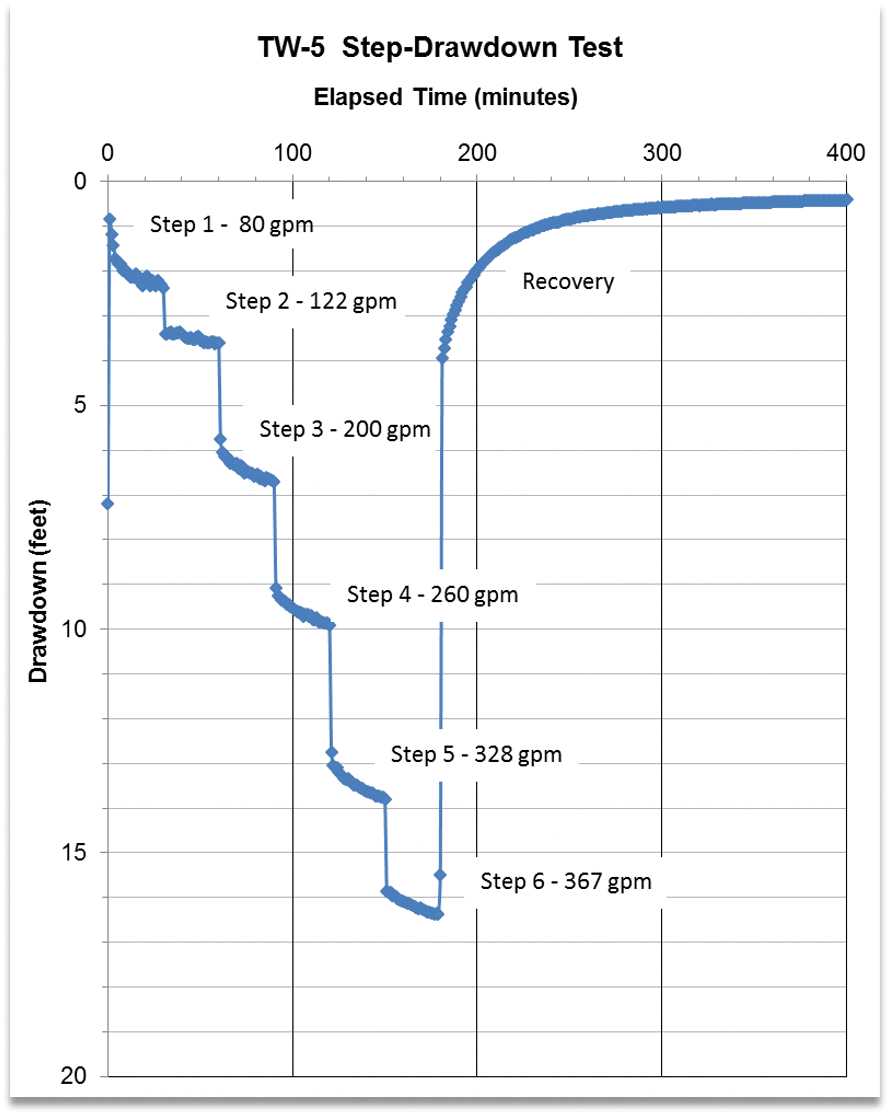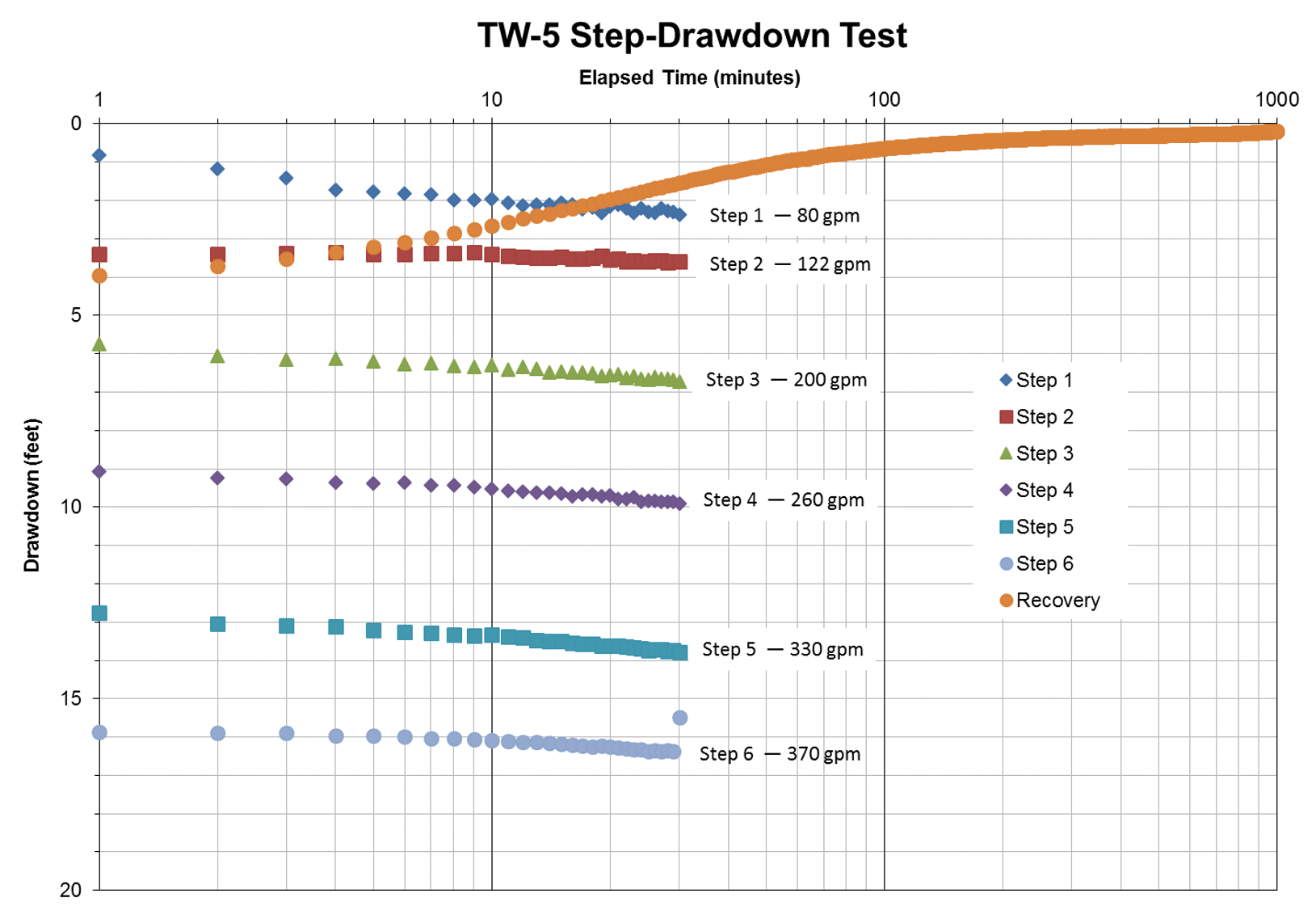PUMPING TESTS FOR AQUIFER EVALUATION, PART 2:
Step Drawdown Testing
Discover and learn the most up-to-date information about
aquifer pumping test techniques from some of the most
recognized authorities in ground water.
 Aquifer Pumping Tests are a key element to site characterization, water resources assessment and remediation system design. Even when you are confident of the geologic conditions, you may have difficulty designing effective aquifer tests, running field equipment or selecting the best available model to analyze the test data. Where do you turn for help with aquifer testing?
Aquifer Pumping Tests are a key element to site characterization, water resources assessment and remediation system design. Even when you are confident of the geologic conditions, you may have difficulty designing effective aquifer tests, running field equipment or selecting the best available model to analyze the test data. Where do you turn for help with aquifer testing?
Midwest GeoSciences Group & In-Situ, Inc. can help! We have designed a powerful six-module webinar series about pumping test design, field methods and data analysis techniques.This course will highlight key steps for modernizing your aquifer testing from beginning to end.
MODULE TWO introduces the fundamentals of step drawdown testing. This specialized testing strategy is a pumping test in which the drawdown in the pumping well is observed while the discharge rate from the well is increased in a step-wise manner. Field analysis of step drawdown tests are discussed and evaluated in order to produce an optimum constant-rate test program and a comprehensive pumping test approach.
Although step drawdown tests are commonly used for optimizing the constant-rate testing program, step drawdown tests can also be used to determine the aquifer transmissivity and the well loss component of the drawdown in the pumped well. The aquifer storage coefficient can also be estimated.
Outline:
- What is a Step-Drawdown Test?
- Purpose and Planning
- Manage well loss variables
- Compare well performance
- Estimate Aquifer Parameters
- Understand well hydraulics issues
- Optimize pumping rates
- Equipment and Setup
- Where to begin with pumping
- Strategies for controlling the flow rate
- Performing the test
- Turning off the pump
- Recovery considerations between steps
- Monitoring field conditions
- Measuring flow
- Choosing the flow device that's right for the project
- Plotting the data
- Linear Drawdown Plot
- Semi-log Drawdown plot
- Stepwise Drawdown Plot
- Adjusting the time axis
- Analysis of the data
- Equilibrium Analysis
- Hantush-Biersshenk Plot
- Clark Analysis
- Jacob's Method
- Re-Analysis Strategies
- What the results mean
- Turbulent Flow
- Pipe flow within the well
- Darcy-Weisbach Equation
- Within the aquifer and filter pack
- Forchheimer Equation
- Transient Drawdown
- Well Skin
- Formation Damage or clogging
- Developing enhanced permeability
- Solution Features
- Well Stimulation
- More analysis tools
- How to apply the results
- Well performance tools
- Well performance over time
- Modeling Methods
- Axisymmetric well-aquifer models
- MODFLOW
- RADFLOW
- SEEP/W
Proficiency Test:
Confirm your knowledge after the course module with a self-test.
Register now for this unique online-offline course
that presents key insights about aquifer pumping tests
that are found nowhere else online.
Whether you want to apply aquifer pumping tests to hydrogeologic characterization, water supply development or remediation design, this Online-Offline Course will provide attendees with information that is not available elsewhere on the web.

Instructors Bio
Michael Kenrick, PE, PhD
 Michael Kenrick, PE, PhD is trained as a civil engineer and hydrogeologist who has developed his practical skills and applied knowledge over a long career in a number of market areas including groundwater resources, water supply, stormwater infiltration, dewatering for the mining and construction industries, and environmental work. He gained experience in the UK, Europe, Africa and Asia before moving to Seattle in 1985 where he has been able to hone the application of hydrogeologic methods to groundwater issues in the Pacific Northwest and within the Americas.
Michael Kenrick, PE, PhD is trained as a civil engineer and hydrogeologist who has developed his practical skills and applied knowledge over a long career in a number of market areas including groundwater resources, water supply, stormwater infiltration, dewatering for the mining and construction industries, and environmental work. He gained experience in the UK, Europe, Africa and Asia before moving to Seattle in 1985 where he has been able to hone the application of hydrogeologic methods to groundwater issues in the Pacific Northwest and within the Americas.
Understanding well hydraulics has been a passion for Michael since being asked as a young engineer to run his first pumping test and develop a dewatering approach for a new nuclear power station in the UK. This has led to a keen interest in understanding and solving the nuances of pumping tests and well testing in particular, where observation wells may be limited or unavailable, forcing more of a focus on analysis of the drawdown and recovery occurring in pumping wells and injection wells. Michael has relied on searching out appropriate technical literature and finding solutions to apply in solving practical groundwater problems, especially related to well hydraulics.